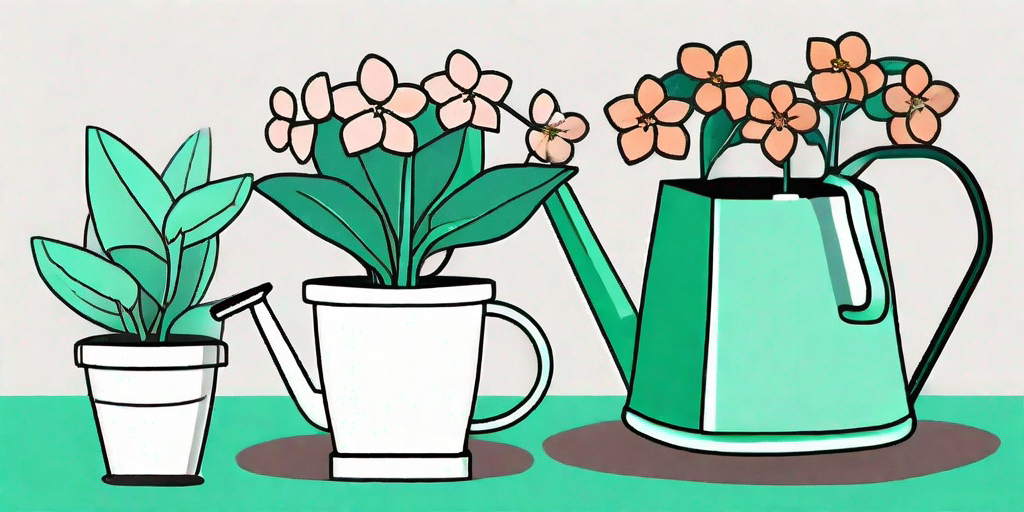
If you're a plant lover, you've likely heard of the Hoya plant. These beauties are known for their waxy leaves and star-shaped flowers, but what you may not know is that they require a specific type of care to truly thrive. In the world of Hoya cultivation, fertilization is key. But don't worry, we're not talking about a complex scientific process here. It's all about providing your plant with the right nutrients at the right time. So, let's dive in and uncover the secret to perfect Hoya fertilization.
Understanding Your Hoya's Needs
Before we get into the nitty-gritty of fertilization, it's important to understand what your Hoya needs. Like a pet, or a particularly demanding house guest, Hoyas have specific requirements that need to be met. But unlike your house guest, they won't leave passive-aggressive notes on the fridge if you forget to water them. They'll just wilt and die. No pressure, right?
Firstly, Hoyas are tropical plants, which means they love warm, humid environments. They also prefer bright, indirect light. Too much direct sunlight can burn their leaves, while too little can stunt their growth. So, if you're thinking of placing your Hoya next to a window with direct sunlight, think again. They're not sunbathing enthusiasts.
The Importance of the Right Soil
Now, let's talk about soil. Hoyas are epiphytes, which means they naturally grow on other plants or trees in their native habitats. This means they prefer a well-draining soil mix that mimics their natural environment. A mix of orchid bark, perlite, and peat moss usually does the trick. So, if you've been using regular potting soil, it's time for a change. Your Hoya will thank you for it.
Remember, overwatering is the fastest way to kill a Hoya. These plants are more tolerant of drought than they are of waterlogged soil. So, when in doubt, let the soil dry out before watering again. Your Hoya might be a diva, but it's a diva that can handle a bit of neglect.
The Secret to Perfect Hoya Fertilization
Now that we've covered the basics, let's get to the main event: fertilization. This is where things get interesting. Or at least, as interesting as plant nutrition can get.
Fertilizing your Hoya isn't just about dumping a bunch of nutrients into the soil and hoping for the best. It's about understanding what your plant needs and when it needs it. And no, your Hoya won't tell you what it needs. You'll need to figure that out on your own.
Choosing the Right Fertilizer
When it comes to choosing a fertilizer for your Hoya, you'll want to look for a balanced, water-soluble fertilizer. This means it should have equal amounts of nitrogen, phosphorus, and potassium. These are the three main nutrients that plants need to grow and thrive.
But wait, there's more! Hoyas also need trace amounts of other nutrients like calcium, magnesium, and iron. So, look for a fertilizer that includes these micronutrients as well. Your Hoya might not send you a thank you card, but it'll show its gratitude by growing lush and healthy.
When and How to Fertilize
The best time to fertilize your Hoya is during the growing season, which is typically from spring to early fall. During this time, your Hoya is actively growing and will benefit the most from the extra nutrients.
As for how to fertilize, it's pretty simple. Just mix the fertilizer with water according to the package instructions, and water your Hoya as usual. Be sure to thoroughly wet the soil, but avoid getting the leaves wet. Remember, your Hoya doesn't like to take showers.
Common Hoya Fertilization Questions
How often should I fertilize my Hoya?
During the growing season, it's best to fertilize your Hoya every two to four weeks. In the winter, you can cut back to once a month or even less. Remember, your Hoya is less active during this time and doesn't need as much food.
What if my Hoya's leaves are turning yellow?
Yellow leaves can be a sign of over-fertilization. If this happens, cut back on the fertilizer and make sure your Hoya is getting enough light. If the problem persists, it might be time to repot your Hoya in fresh soil.
Can I use a slow-release fertilizer?
Yes, you can use a slow-release fertilizer for your Hoya. Just be sure to follow the package instructions and don't overdo it. Remember, when it comes to fertilizing, less is often more.
Conclusion
And there you have it, the secret to perfect Hoya fertilization. It's not rocket science, but it does require a bit of knowledge and care. But don't worry, with a bit of practice, you'll be a Hoya fertilization pro in no time. And your lush, healthy Hoya will be the envy of all your plant-loving friends.
So, go forth and fertilize. Your Hoya is counting on you.















